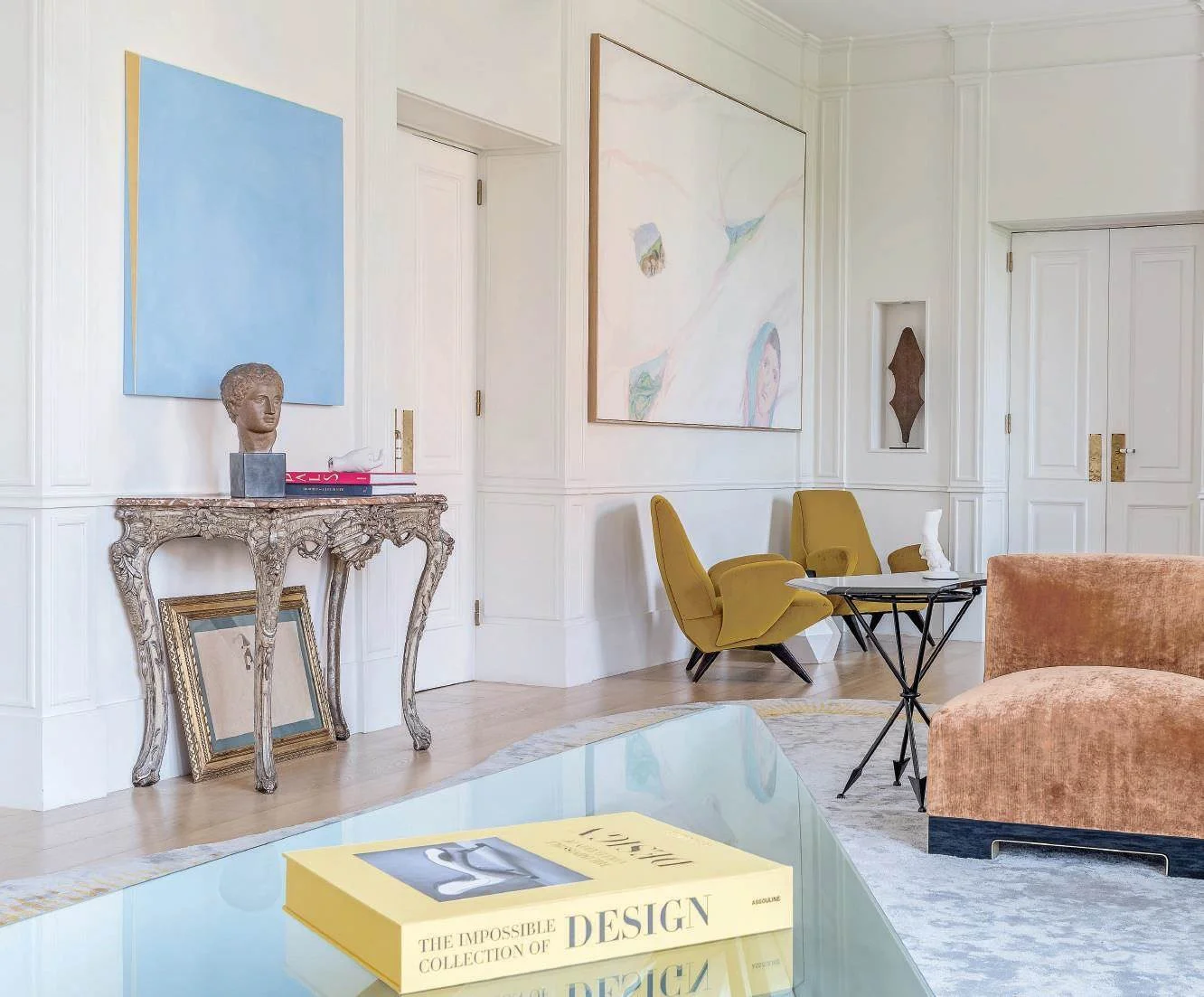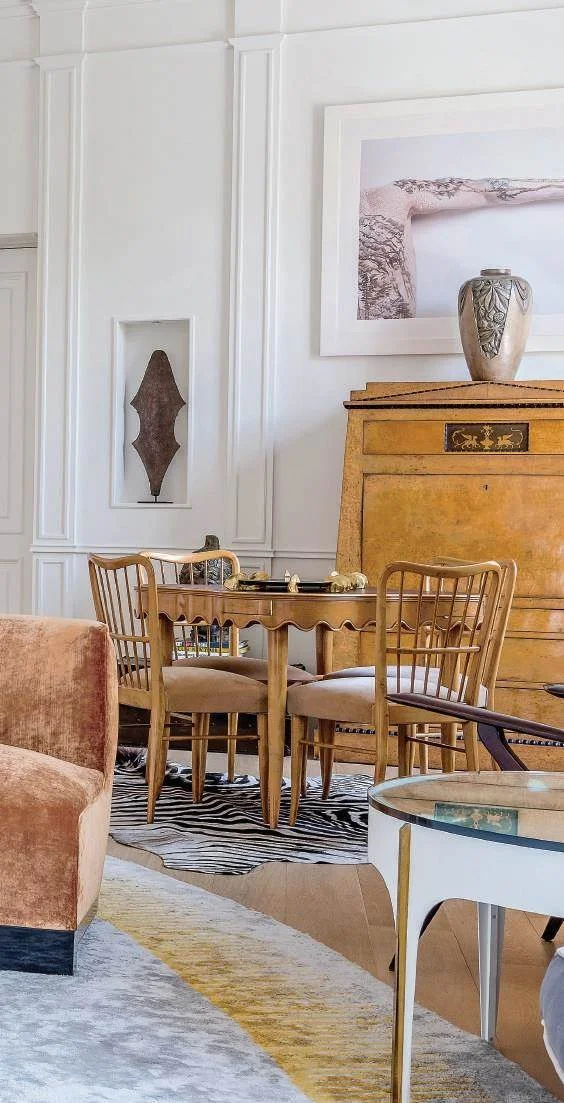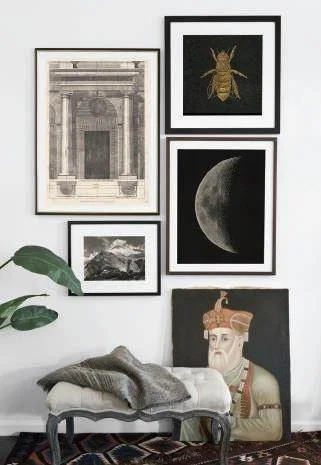Ins and Outs of Displaying Modern Art | Don't Be Afraid to Mix Up Styles or Periods
Modern art can be many things: Towering sculptures, floor to-ceiling paintings, object installations—all of these types of works have their rightful places when they live in a museum. But displaying them in the confines of your living room, kitchen or dining room can be an art in itself.
We asked two experts in the worlds of design and framing for their best advice.
DON’T BE AFRAID TO MIX IT UP
“For me, juxtaposition is everything,” says Rome-based architect and designer Achille Salvagni. “The only…factor that should determine what is kept in and what is kept out is the quality.”
If everything in the room is of the same high quality, it’s fine to mix things up, he says. “Mixing periods and styles is important to create a dynamic, but you must be careful to give each piece its own space and allow the room to breathe.”
One or two accent colors in a space can help tie different works together and create harmony. Or you might use shapes, materials, symmetry and lighting to find cohesion, Salvagni adds.
"Mixing periods and styles is important to create a dynamic, but you must be careful to give each piece its own space and allow the room to breath"- Achille Salvagni
PROPORTION IS IMPORTANT
No single piece should be too overwhelming in a space, Salvagni says. “The size of the artwork should be in relation to the room itself, to complement the setting," he says.
Dara Segal, founder and CEO of SimplyFramed.com, Maumee, Ohio, doesn’t have a hard and fast rule about proportion. “If you truly love a work of art, a few inches here or there shouldn't prevent you from enjoying it. We've seen gallery walls go from floor to ceiling and look amazing. You can also have one small work own a fairly large space—that minimalist effect can work well, too,” she says.
“Instead of thinking about the scale of the artwork in relation to the room, think about breaking up your room into smaller vignettes and then scaling your art to that vignette,” Segal says. “So, for example, the space between two windows can be one vignette. Above and around a sofa is another. Over a console or entry table would be another.”
FOCUS ON FRAMING
Segal recommends framing each piece in the way that best complements the art inside—not in response to other frames in your collection or the decor of a room. “This approach usually makes for a much more interesting display and ensures that if you choose to hang your piece somewhere else later on, it will still look phenomenal,” she says.
And according to Segal, there are a few general rules of thumb for hanging artwork. You'll want at least six to 12 inches of space between any low piece of furniture and your art. Three to six inches is a general guideline for spacing between individual artworks, and 57 inches is a good standard measurement to use from the floor to the center of a large piece of art so it hangs at eye level.
“Of course, rules are meant to be broken, and we’ve seen some really fun exceptions to these,” she says.
Segal recommends framing each piece in a way that best complements the art inside- not in response to other frames indoor collection or the decor of a room.



